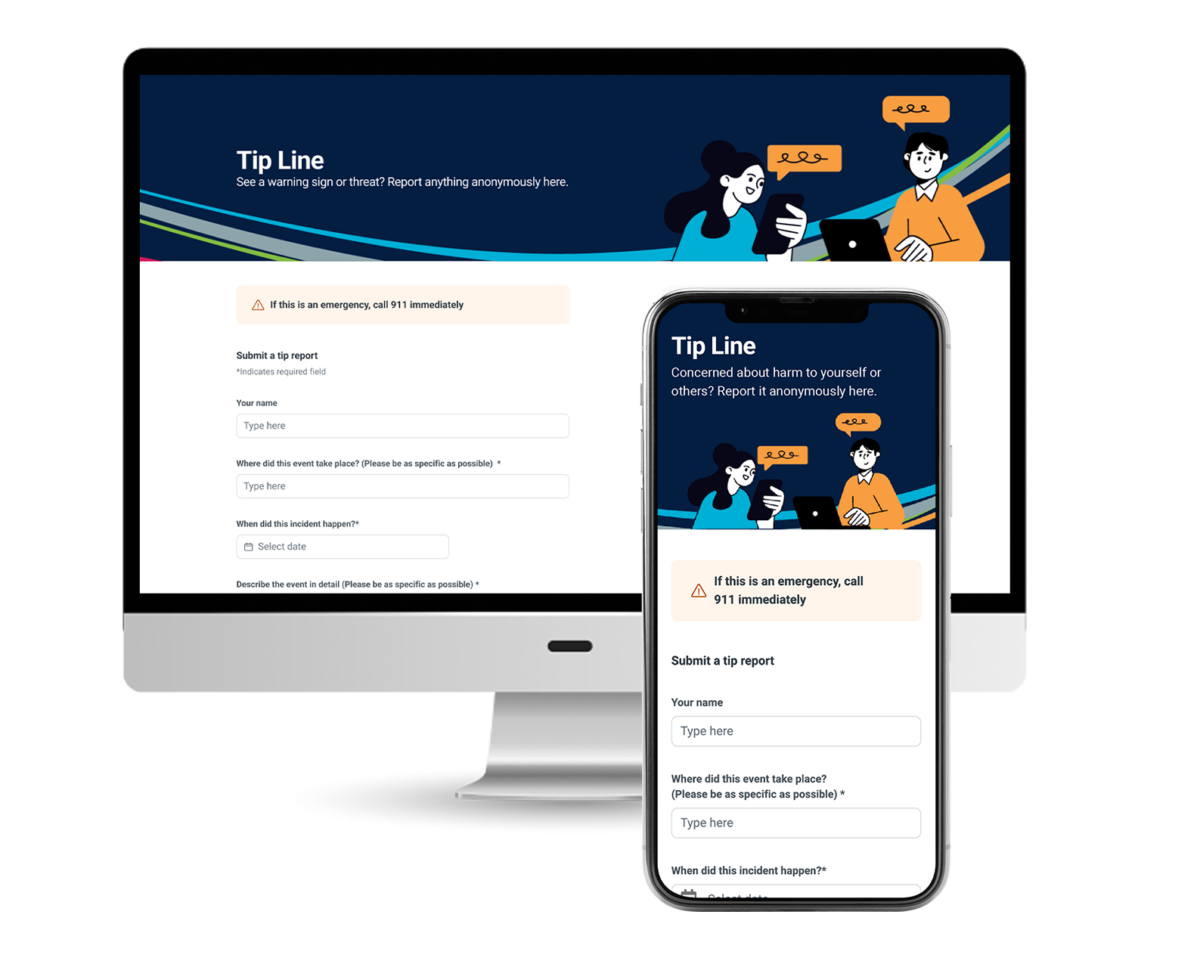School tip lines are designed to provide students, faculty, or members of the public at large with a confidential, anonymous manner to report potential threats to student safety, like bullying, self-harm, violence, and other concerns. Tip lines are vital tools in the quest to better protect school safety and student well-being, and their use across school districts is growing.
According to a 2020 National Institute of Justice report, “Tip Lines for School Safety: A National Portrait of Tip Line Use,” over 51 percent of middle and high schools had tip lines deployed by the end of the 2018-2019 school year, with 12 states enacting laws that established statewide school safety tip lines. Campus life post-pandemic, with its deepening student mental health crisis, has fueled tip line growth.
Currently, according to an article published by NPR, schools in 23 states have established anonymous tip lines serving more than five million students in grades six through 12. Tip lines empower anyone who observes unusual or troubling behaviors to notify those in positions to intervene.

New Study Sheds Light on Importance of School Tip Lines
A new study recently published in Pediatrics, the official journal of the American Academy of Pediatrics (AAP), evaluated the school tip line use in North Carolina to determine its success at identifying and preventing firearm-related threats to schools. While gun violence is just a single aspect of school and student safety, it’s an incredibly important one. Since 2020, when it surpassed traffic fatalities, gun violence has grown to be the leading cause of death of children and teens in the United States.
Researchers found more than 18,000 tips submitted between 2019 and 2023, with 10 percent of all submissions referencing firearms. Of those 1,800 gun-related tips, 38 percent concerned a potential school shooting, nearly 25 percent were about seeing or knowing about a weapon, and additional gun-related tips included concerns of suicide and bullying. The resulting interventions clearly showed the tip line’s effectiveness, as six planned school shootings, 38 instances of school violence, and 100 planned suicides were prevented, in addition to over 1,00 mental health interventions.
And that was in just a single state!
School Tip Lines are More Than Just a Phone Line
The most effective tip lines involve in-depth processes that start first with educating and training the entire school district community—students, teachers, administrators, and parents included. Those training courses help all stakeholders identify and understand signs of potential violence and self-harm. Then, there are the methods to submit tips, including those phone lines, but also email and web/app forms.
Tips are Just the Start
Once tips are submitted, they require a human review element to ascertain the validity of the threat and its urgency. Trained crisis counselors work the tip and gather as much information and context as possible, ultimately determining if there is an immediate threat to anyone’s safety and well-being. When the determination of an imminent threat is made, that human review element then escalates the tip to the relevant district personnel and/or law enforcement for immediate action.

Introducing Lightspeed Tip Line
Lightspeed Tip Line is a no-cost complementary feature available to all Lightspeed Alert™ customers who are supported by Lightspeed Systems’ 24x7x365 Student Safety Specialist team. Once deployed, the Lightspeed Tip Line allows unrestricted web form, email, and phone/voicemail submission.
Incoming tips are reviewed, triaged, and processed by the human review Student Safety Specialists, and should tips warrant escalation, notifications follow the school district’s escalation process, which might include notifying local law enforcement.
For more information about Lightspeed Tip Line, please refer to the press release, “Lightspeed Systems® Introduces Lightspeed Tip Line to Empower School Communities,” distributed on February 28. For a demonstration of Lightspeed Alert’s best-in-class capabilities to identify students in crisis for proactive student safety, click on “Request a Demo” at the top of the page.

